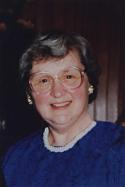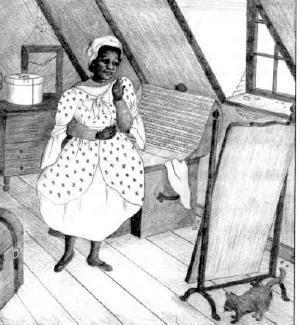|
FRESH STUFF DAILY |
|
|
||
|
|
||
|
|
||
|
SEE ALL SIGNED BOOKS by J. Dennis Robinson click here |
||
Page 2 of 2
INTERVIEW WITH PAT WALL SeacoastNH PAT WALL I think once readers move on into the story, carried along by more of Debby's heart warming drawings, they'll discover it's got all sorts of stuff to hold their interest. While it does reveal much about the different nature of slavery in New England -- as compared with most of the South - it's really about a child's determined optimism in the face of harsh reality. Despite what young Matty's relatives tell her, she's certain there's a special, happier place for her, a "belonging place", she calls it and that one day soon she'll get there. I realize that slavery is an uncomfortable topic for some parents and teachers of young children. This story provides a gentle way to get discussions going, help kids empathize with young Matty, be with her as she's forced to confront the reality for African Americans in 1806. It's the human connection that makes history fun. Lots of textbooks fail at that. SeacoastNH PAT WALL Of course, research was only one big stumbling block on the way to creating Child Out of Place. Though I'd been writing non-fiction journalism for years, I had to learn a whole new writing craft, learn to create characters and historically accurate settings, get characters to interact, respond to their situations and settings -- hundreds of new challenges for me. Even word for word, the language had to be accurate for the times. Thank goodness for the Oxford English Disctionary.
So many times, over that first year or so, I walked away from the whole thing, threw away chapters, even a draft of what I thought was a finished book. I never had that much trouble when writing for newspapers. All I had to do then was create a snappy first sentence hook and let the fishing line play out until the editor cut it. A novel is a whole different critter. But something -- likely my character Matty -- kept pushing me. I knew she had an important, unusual story to tell. I just wasn't sure I was the one she needed to tell it. It's a funny feeling to invent a character and then she begins to talk to you. No, I wasn't hearing voices. The more I learned about enslaved Africans in the North, the more I felt compelled to write a story about that for youngsters. It's a chapter that's missing from their textbooks. In retrospect, I'm ever so grateful Matty came along. she changed me, opened new horizons for me, intellectually and personally. She set me on a mission. SeacoastNH PAT WALL Prior to about 1760, I think the word "isolation" best describes the difference between enslaved Africans in New England compared with those in the South. As Matty's great uncle Ned tells her, "Bad as that Barbados plantation was for our parents, at least there they had the comfort of friends near by." That wasn't true in early Portsmouth. SeacoastNH PAT WALL SeacoastNH PAT WALL There are pluses to self-publishing. You've got more control over the outcome than with most commercial publishers, especially in regard to illustrations. Every time I look at the book, I thank God that Debby Ronnquist came along. It was such joy working with her. The price tag to produce 2000 books was about equal to a couple of those adventure trips seniors like to take. I certainly got far more enjoyment and satisfaction on my "book trip." I wish I could have afforded a hardcover edition. There's not much for posterity in paperbacks. But, who knows, maybe Fate will smile one day and a commercial publisher will buy it and do it up proper. As for not having an editor -- in a way -- I actually had multiple editors, especially my daughter, as well as many caring friends who read and commented on various drafts of the manuscript. They're all listed in the book. SeacoastNH PAT WALL SeacoastNH PAT WALL To my surprise, on one of my visits, I imagined a servant child and, she was black. Questions about her flooded in, and soon Matty came into being. The more I got immersed in early African American history, the more Matty and her story took shape. At first, I did worry that my being white would be a barrier. But I soon realized that ignorance is the barrier, not skin color. As for dealing that "distant time" you asked about, I grew up surrounded by the past, by antique furniture and parents who loved American history. They often dragged me off to visit historic sites and old houses. I loved it but, as kids will do, I often made fun of all that "old stuff." Somewhere, up there, my folks are now having the last laugh. Copyright © 2004 SeacoastNH.com. All rights reserved.
Please visit these SeacoastNH.com ad partners.
News about Portsmouth from Fosters.com |
| Friday, April 26, 2024 |


|
Copyright ® 1996-2020 SeacoastNH.com. All rights reserved. Privacy Statement
Site maintained by ad-cetera graphics





 Curiosity, I hope. The title is likely to strike a familiar cord. Most kids at one time or another have had that uncomfortable feeling of being "out of place"...not belonging. And, the book's cover, painted by my friend and illustrator, Debby Ronnquist, does stir the imagination. Were I a teacher, I'd challenge my students to make up their own story just on that cover.
Curiosity, I hope. The title is likely to strike a familiar cord. Most kids at one time or another have had that uncomfortable feeling of being "out of place"...not belonging. And, the book's cover, painted by my friend and illustrator, Debby Ronnquist, does stir the imagination. Were I a teacher, I'd challenge my students to make up their own story just on that cover.















